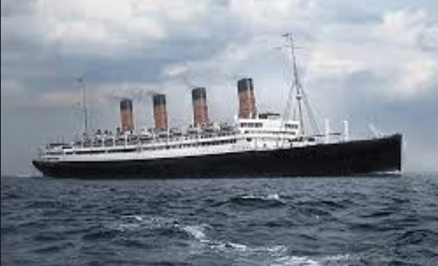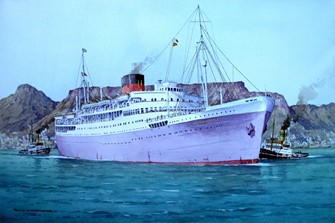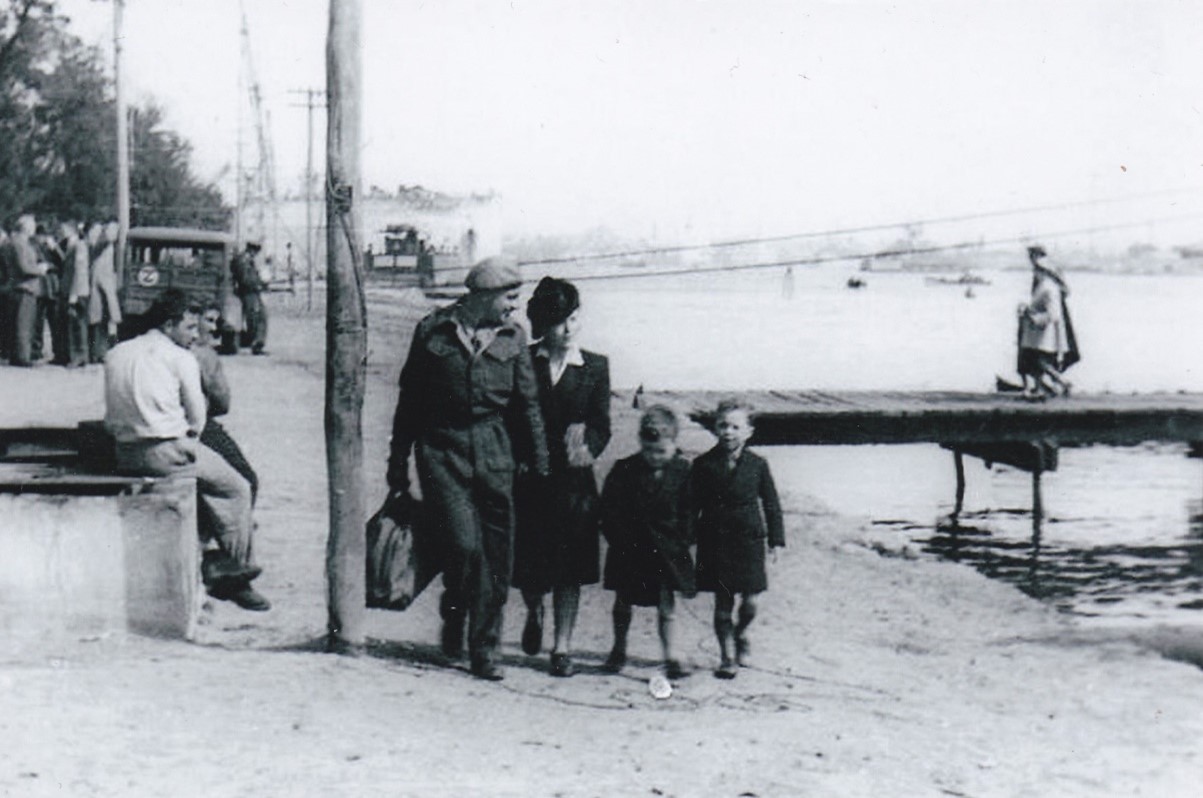Website Manager Note: The first part of Harry’s article can be read here:
If you have not yet read that suggest you might do so before reading this, the second part.
Dunkirk (1940) – What Happened Next
Extracts from my father’s book are shown in parenthesis.
Travelling from Sherness by train my father joined members of his company in a tented camp based on the playing fields of Ox and Bucks Light Infantry barracks near to Oxford. He remembers the amazing reception given to the troops by the civilian population who treated them like heroes – free cinema and bus tickets and not being allowed to pay for their beer in local pubs! A few weeks later he was posted to Willsworthy camp on Dartmoor to join his understrength company of Engineers. From there he was posted to RAF Sealand to help in the construction of the defence requirement such as camouflaging buildings etc.
“When Germany commenced to air-blitz our major cities the whole Company moved to the Liverpool area to be employed on the demolition of dangerously bombed buildings, and unexploded bomb location etc. I was able to visit Jessie and the boys occasionally. (We lived in Seaforth next to Bootle and the Docks). One evening whilst it was still daylight, Jessie happened to look out of the kitchen door to see a huge parachute descending. She shouted to her father who arrived in time to identify it just before it disappeared behind the high railway embankment and immediately pushed Jessie and young Ernie (My older brother) under the stairs. It was one of the first land-mines to be dropped during the blitz of Liverpool and it devastated a large area on the other side of the embankment which protected our estate. It was an enormous explosion, so it was with nervous hilarity that the family laughed about the line of mug and jug handles left hanging on hooks on the edges of the shelves. No other damage had been done, and young Harry had slept through it all in his pram.
The bombing became more intense and one night when I happened to be off duty and at home, the family had to be evacuated along with all the neighbours when I located an unexploded bomb in a neighbour’s garden soon after I had heard it come down. Everyone moved to a Church Hall about two miles away and out of the immediate target area. The next day I got permission to move Jessie and the boys to the home of some friends who lived on the Wirral peninsular until the bombing subsided somewhat.
The company later moved to South Wales and the West Country installing Ground Location (the forerunner of radiolocation) on key anti-aircraft sites, and it was whilst I was home on leave from one of these sites that Jessie and boys moved back home to her parents.”
Early in 1942 my father’s Company moved to Salisbury Plain where the early and urgent stages of the preparation for the eventual invasion of Europe were beginning to take shape. Later that year my father was one of five men selected for a reinforcement draft being assembled for overseas. They were given an hour to have their kit checked and packed before travelling to the Royal Engineers Overseas depot in Halifax. Thankfully they were immediately sent on seven days embarkation leave. Whilst home he met my mother’s brother who was serving on a troop-carrying ship in the Merchant Navy. He advised my father to volunteer for some kind of job once on board his ship. It would otherwise be a long and boring trip around Africa to Suez. Father really made the most of being at home, but little did he or my mother realise it was going to be almost four years before they would see each other again!
Father’s draft travelled overnight to Gourock and embarked on the SS Aquitania – a huge transatlantic liner of the Cunard Line. There were a total of over 8000 troops on board. They were packed like sardines in canvas bunks stacked three high.
“The Aquitania was one of a huge convoy of troop-carrying liners and fast cargo ships which sailed out of the River Clyde later that evening, but the size of the convoy was almost doubled next morning when it was joined by another one from Liverpool off the coast of Northern Ireland. Our escort consisted of one aircraft carrier, two battle cruisers and several very fast destroyers to protect us from submarines. These destroyers continually circled the convoy in zig-zag patterns at a distance, darting about like sheepdogs protecting the sheep.”
“The first morning we were at sea volunteers were called for from our draft for duties as batmen to the junior officers on the draft. Remembering my brother-in-law’s advice I volunteered and found myself looking after four of these officers who were sharing the same cabin. For seven or eight days we sailed westwards dodging the submarine packs in the northern Atlantic keeping to the speed of the slowest ships, then on a beautiful sunny Sunday morning we had quite an emotional but thrilling experience. The Aquitania was a very fast ship, and with the threat of submarines now diminished somewhat, she was to leave the convoy and proceed alone because with her speed and the ability to make frequent course changes she was able to out manoeuvre and outrun any stray submarines operating outside their usual hunting grounds. She dropped to the rear of the convoy whilst the remainder of the ships formed up in two lines ahead, then at full speed she sailed through the convoy to the cheers and hat-waving of the troops and crews of the other ships as we passed between the two lines. The convoy was so large, and moving in the same direction, that it took us an hour to pass through it and another two hours before we lost sight of it over the horizon. We were now on our own but had an uneventful voyage to Simonstown Bay near Capetown (via Freetown – West Africa – on 20th June, 1942), where we laid at anchor for 24 hours to re-fuel and take on more food and water, but we were not allowed ashore”
Five weeks after leaving Gourock following a short stop at Madagascar on 30th June and Steamer Point (Aden) on 3rd July, 1942 to take on water they reached the port of Suez on 8th July, 1942. Within a few days both the Queen Mary and Queen Elizabeth also arrived each carrying 12,000 troops taking the total number of reinforcements to over 32,000 to strengthen our retreating army in the Western Desert. My father was based at the Royal Engineers Depot and Training Centre near Ishmalia on the shore of Lake Timsah, the smallest of the Bitter Lakes through which the Suez Canal passes.
At this time Field Marshal Rommel was making rapid advances with his Africa Corps across the Western Desert. The only place where his armour could possibly be stopped was at El Alamein. It was decided that this front would be defended by laying mine-fields in depth. My father’s main task at this time was laying mines between the Sea and the Quatara Depression. My father’s book gives much more detail, but too much for me to include in this article. However, I will include a brief account of two of his experiences:
(a) He became good friends with Bill de Winton ( Sergeant i/c the office), and they in turn made friends with some of the flying crew of the two squadrons of B25 Mitchell medium bombers of the American Army Air Force based at RAF Ishmailia. The two of them had the opportunity to take a flight with them on one of their missions to the Siwa Oasis (held by the Italians). Father was instructed on a point-five Browning machine gun and assigned the rear gunner position. Unfortunately damage to the undercarriage on take-off resulted in the complete failure of the hydraulic system, which meant that they could not land at the airfield and had to bail out over the desert. On landing my father rolled up his parachute, took a bearing and began walking east. Sometime later a small spotter plane found him and indicated that he had been seen. It came back later guiding a truck to pick him up. Only two members of the crew had minor injuries. Because they had saved their lives by parachute they qualified to become members of the Caterpillar Club. (I am now the proud owner of my father’s caterpillar broach and membership card).
(b) My father’s work and duties were brought to the attention of the Depot Commander (Colonel Cloutman) who recommended him to the Officer Selection Board at Maadi just outside Cairo. Father was successful and completed his training at OCTU which was located north of Haifa in Palestine on the shore of the Mediteranean Sea. He wrote that the course as a whole was hard and trying, even quite difficult at times, but found the challenge very fulfilling and felt both elated and proud when he was granted the King’s Commission.
My father’s book gives a lot of information about the rest of his time in Egypt as a Commissioned Officer. The day that the war ended in Europe he was alone in his tent in the Muquatten Hills when he heard the announcement on the radio. He experienced very mixed feelings of elation, thankfulness and humbleness. Later that day he travelled into Cairo to have dinner with a friend at the Officer’s Club. The atmosphere was one of relief rather than one of joy. It was strange to see the city of Cairo which was always crowded with British troops, almost devoid of them. When the demobilisation (mid 1945) of British troops first started my father applied for a Regular Army Commission which was granted. This entitled him to apply for his family to join him in Egypt provided he agreed to serve an extra year and found accommodation. He rented a flat in Maadi – a small but beautiful residential satellite garden town on the River Nile about eight miles from Cairo.
“The War Office acted very quickly on my application, and Jessie and the boys were among the first families to arrive at Port Said on the Captown Castle (pictured below – It left Southampton on 14th December, 1945 – arrived Port Said on 6th January, 1946). That reunion on the dockside was a truly wonderful moment for us. Jessie had done great things with the boys, never allowing them to forget their dad. They raced each other ahead of their mum across the pontoon bridge from the ship to the dockside. When their mum and I hugged and kissed each other we were oblivious to the cheers and cat-calls of the troops lining the decks of the ship. They were going on to India.” 
If you are interested please access the Internet to find the information about both Capetown Castle and The Aquitania. They were both fantastic ships.
The photograph below brings many happy memories back to me, especially as I am writing this on Remembrance Day (2020). I am the good looking lad next to his mum!?  What happens next is another story, which I hope to write at a later date for inclusion in a future newsletter. Stay safe.
What happens next is another story, which I hope to write at a later date for inclusion in a future newsletter. Stay safe.
« Summer Camp Porthcawl – Grahame May (25th) || Some Personal Thoughts – Ron Spurs 320th »